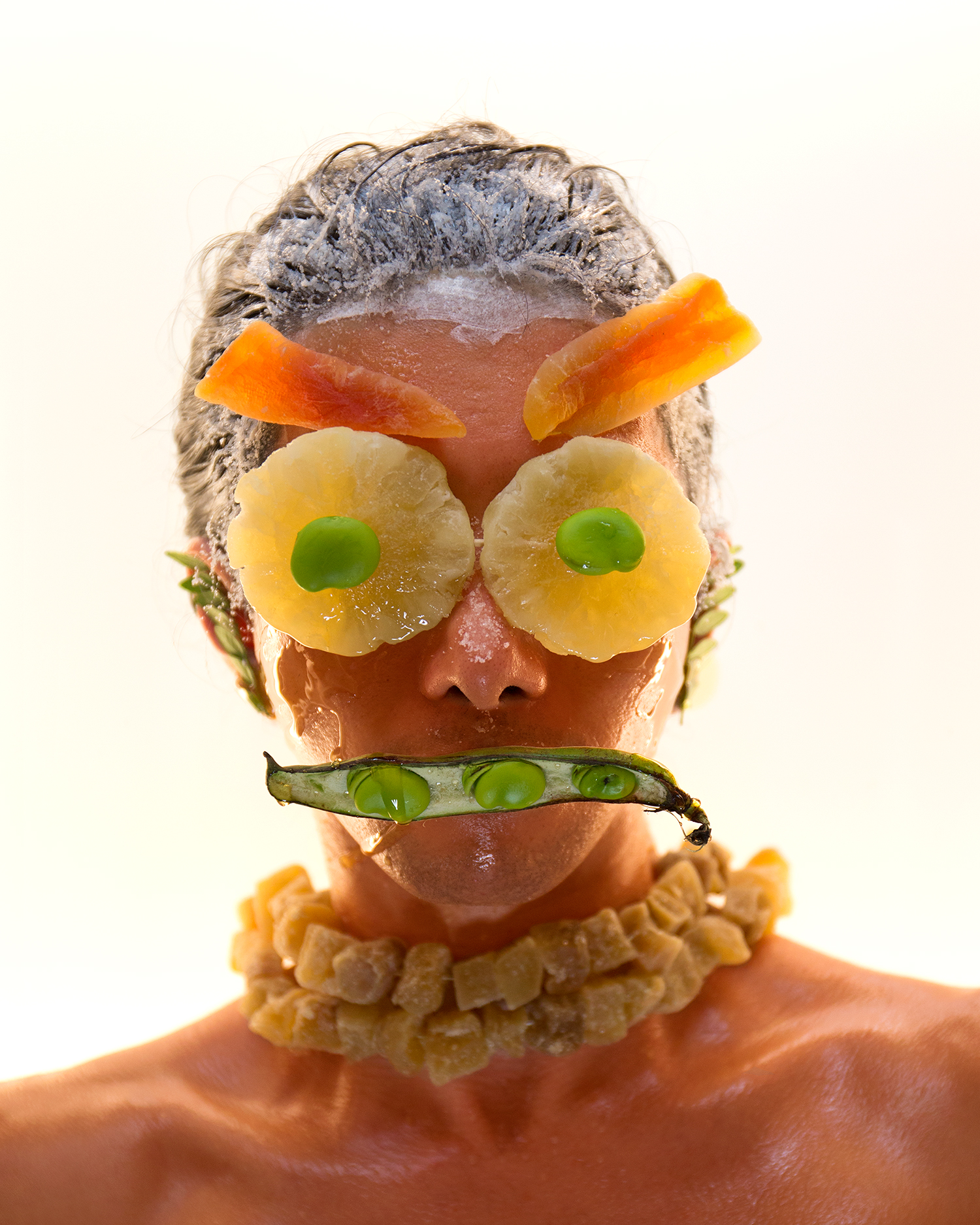It’s time to venture across the Triborough bridge again because Frieze New York is back for its eighth showcase of modern and contemporary art. Touting diversity, outsider artists, and virtual reality, the 2019 edition opens in Randall’s Island Park from May 2-5. With top galleries flying in from 26 countries, the fair showcases iconic art world figures (Tracey Emin, Jenny Holzer, Lorna Simpson, Anish Kapoor, Alex Katz, Robert Rauschenberg) as well as fresh features like a section dedicated to Latino and Latin American art (Diálogos) and the inaugural Frieze Sculpture at Rockefeller Center. There’s a rich assortment to see, but i-D is especially excited about these ambitious presentations that compellingly wrestle with identity, body image, gender, technology, and race.

Sarah Faux, Capsule Shanghai, FRAME
Brooklyn-based artist and Yale MFA graduate Sarah Faux creates paintings that hover ambiguously and appealingly between figuration and abstraction. Faux deploys oil paints (and veers into dye, bleach, and spray paint too) to articulate corporeal forms in a decontextualized way. Her approach of cropping and composing subjects highlights partial limbs and incomplete silhouettes: splayed fingertips, arched wrists, curved knuckles, bent knees, widening pubic mounds. For her installation at Frieze, Faux’s cut-outs, collaged on canvas, will hang “tacked up like animal hides,” as her gallery put it: functioning as both works unto themselves, and as backdrops for her paintings.
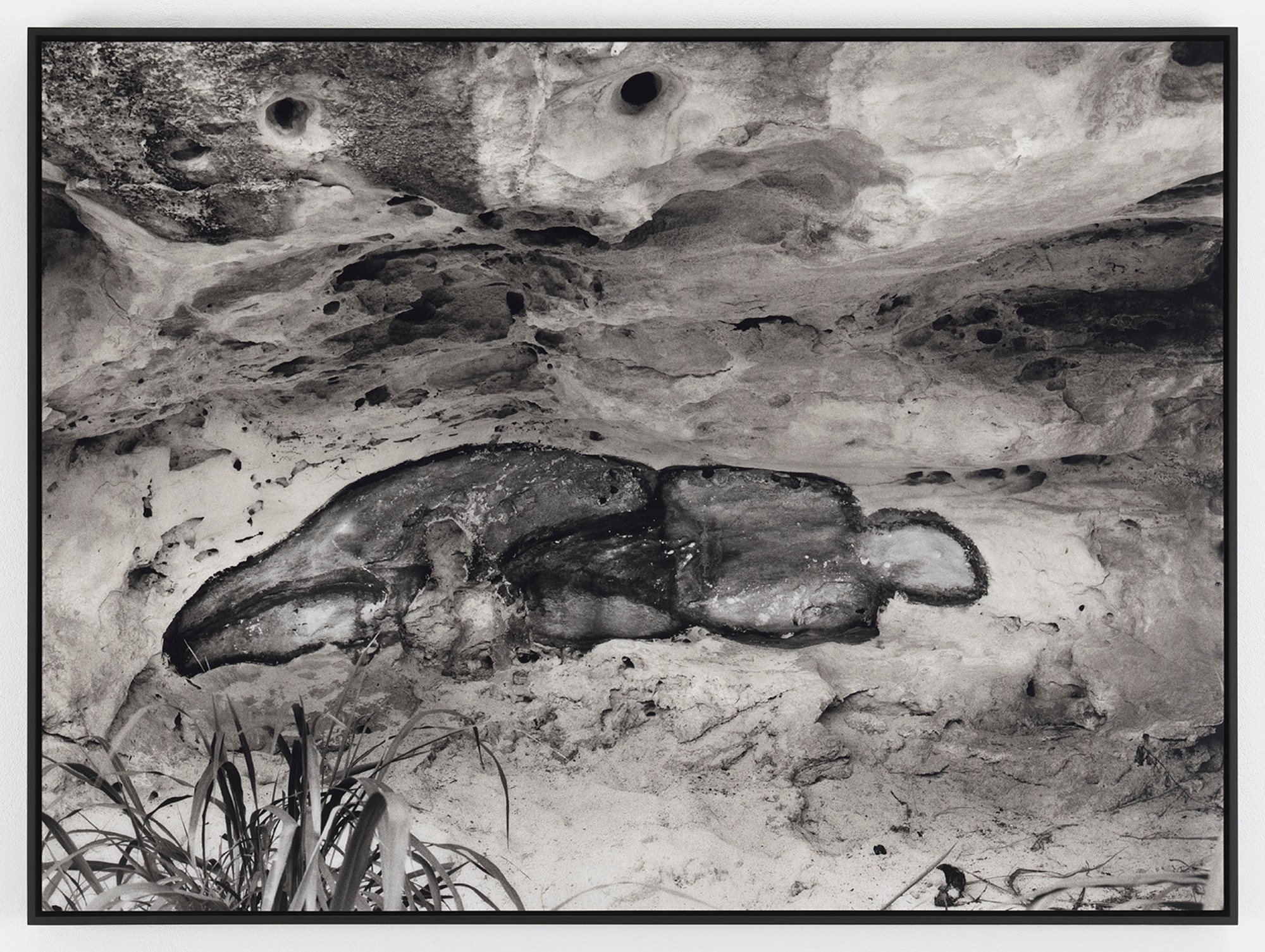
Ana Mendieta, Galerie Lelong & Co , DIALOGOS
Havana-born Ana Mendieta was exiled to the United States in 1961, while still a child, to escape the political turmoil in her native country in the wake of the Cuban Revolution. Throughout her fascinating and heartbreakingly short-lived career (she died under disturbing circumstances in 1985), Mendieta wrestled with the notions of homeland and displacement. She felt empowered by the lushness of nature, and she celebrated the vigor and fragility of female personhood in equal measure. Her films and photographs engaged viscerally and intimately with the territories that held personal significance to her: Mexico (“Burial Pyramid,” 1974), Iowa (“Volcan,” 1979), and Cuba (spanning a selection of pieces from her 1981 “Esculturas Rupestres” series).
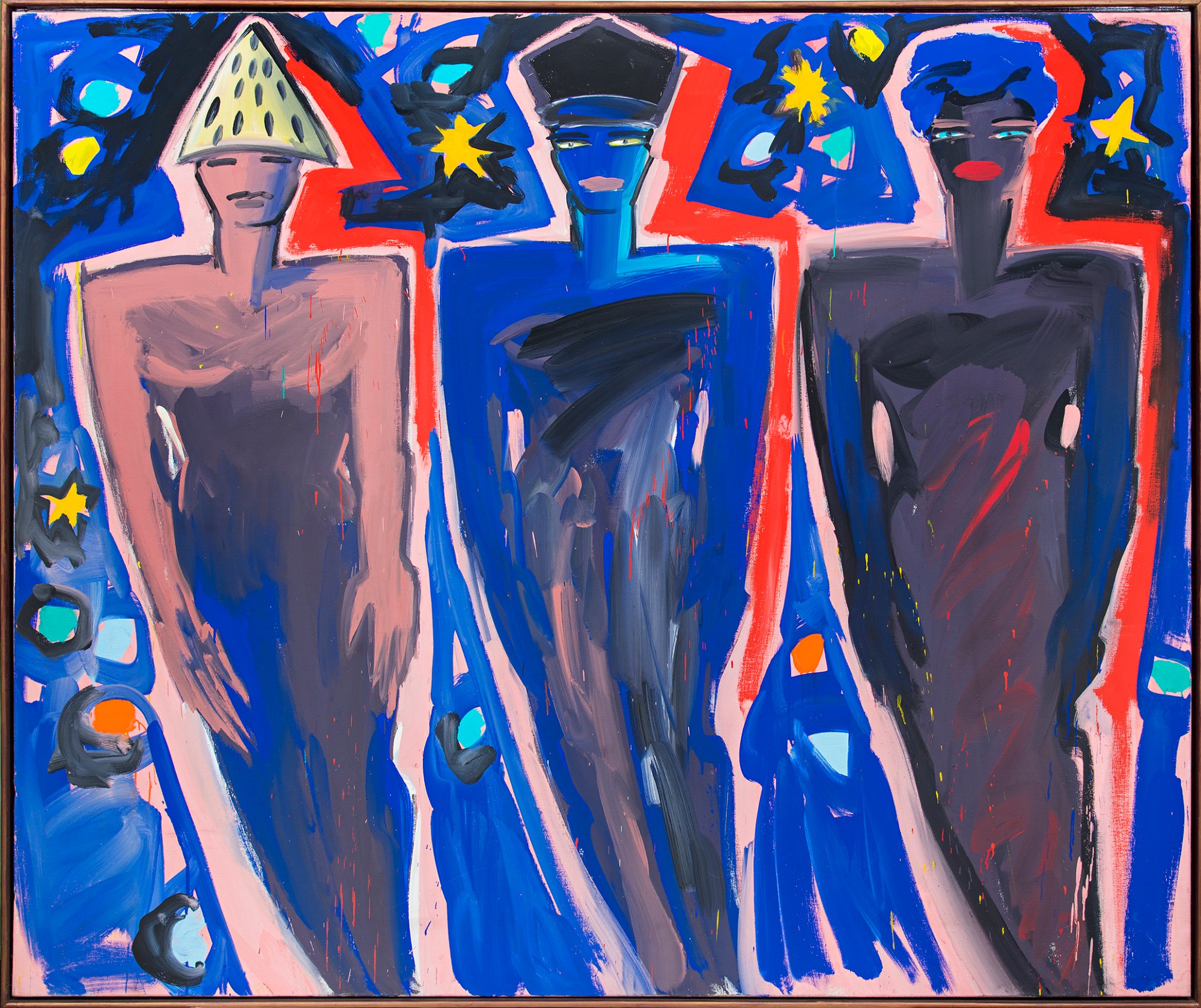
Elvira Bach, Galerie Kornfeld , SPOTLIGHT
German artist Elvira Bach—associated with the “Junge Wilde” (“Wild Youth”), an aesthetic movement characterized by its use of vivid palette and dynamic brushstrokes—first made her mark when she participated in the Documenta 7 exhibition in 1982. “Colors and forms are my way to meet the world,” she stated in an interview held in her Kreuzberg studio in Berlin, where she’s been living for many decades. At Frieze, Galerie Kornfeld will exhibit her early works painted between 1978 and 1985, some of which have never been shown before. The selection focuses on Bach’s depiction of the “Neue Frau,” an emancipated woman represented through red manicures, red wine, red bathing suits, and red heels.
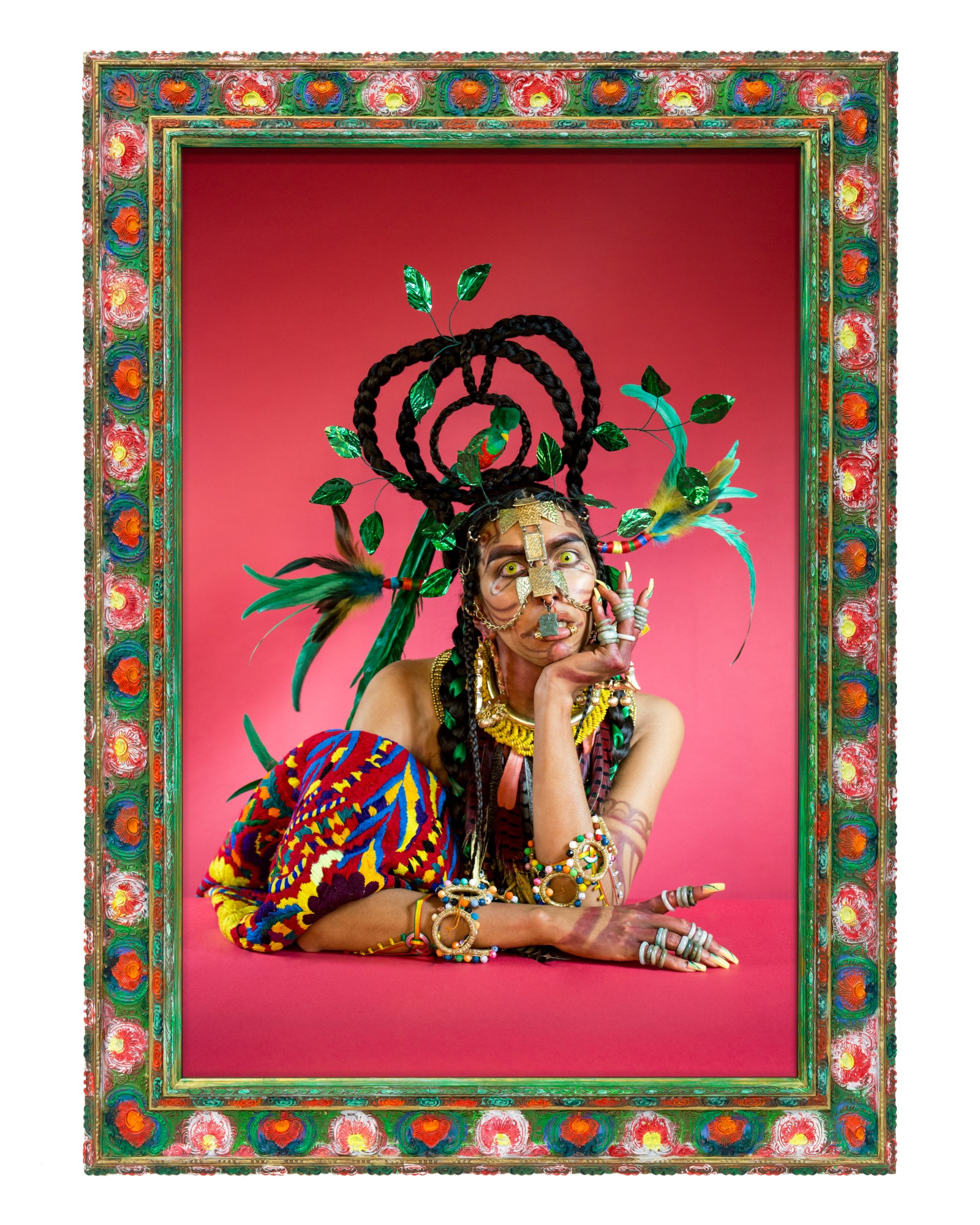
Martine Gutierrez, Ryan Lee , FOCUS
California-born Martine Gutierrez will showcase new printed work from her self-made publication Indigenous Woman, which subverts the fashion magazine template even as it nods deferentially to it. (The New Yorker described the series as a “critique of colonialism that’s ready to party.”) Bulldozing the still-all-too-prevalent cis, white, Western iconography that characterizes such publications, Gutierrez’s version is replete with authentic regalia, textiles, and cultural tropes that celebrate her Amerindigenous heritage, mingling editorials with cheeky fake ads that skewer real-life campaigns. “I was driven to question how identity is formed, expressed, valued, and weighed as a woman, as a transwoman, as a latinx woman, as a woman of indigenous descent, as a femme artist and maker,” Gutierrez stated in her editor’s letter. The endeavor is a powerful showcase of a 360-degree vision, an aesthetic created with “full autonomy—all photography, modeling, styling, makeup, hair, lighting, graphic design, and product design I have executed myself.” As the artist told Vice last year: “I want it to feel easy.” The artist added: “We’re living in an era where my existence is political whether I want to be or not. It’s really hard and emotionally taxing, and humor is my savior.”

Dawoud Bey, Stephen Daiter Gallery New York City-born Dawoud Bey launched his career as a photographer in 1975 with the series “Harlem, USA,” which became fodder for his first solo exhibition in 1979 at the Studio Museum in Harlem, and then again at the Art Institute of Chicago in 2012. (Bey returned to Harlem in 2014 to photograph the neighborhood’s queasy gentrification for his “Harlem Redux” series.) Bey was influenced by artists Charles White, Roy DeCarava, Gordon Parks, and Romare Bearden; he has also cited musicians like Miles Davis, John Coltrane, and Prince as forward-thinking touchstones. “I make the work that I do in order to visualize the things that are important to me, and to make them matter to someone else, whether that is the black subject, young people, history, the ways in which black physical and social space is being reshaped in places like Harlem, or how to bring African-American history—such as the Birmingham tragedy or the Underground Railroad—into the contemporary moment and conversation,” he told The New York Times last year. The solo presentation of Bey’s early 1980s images include never-before-exhibited portraits of American artist David Hammons, whose own work engaged with the civil rights and Black Power movements, using loaded iconography like the American flag, African tribal masks, and basketballs to criticize race and class discrimination, as well as the commodification of art.

Kandis Williams, Night Gallery Berlin- and Los Angeles-based artist Kandis Williams will present new collages and silkscreens, deepening the artist’s examination of the struggles of race, the weight of colonial history, and problems of appropriation. Here the artist references a cast of cultural characters as varied as Michael Jackson, artist and educator Josef Albers, philosopher Jean Francois Lyotard, and choreographer Michael Clark. Her work remixes imagery and applies intellectual seriousness to the results (one of her pieces, which practically sounds like its own curriculum, is titled “Modernity is not merely a compromise between novel forms of commercially driven social organization and this archaic cultural pattern of patrilineal exogamy, but more fundamentally, a deepening of the compromise already integral to any exogamy that is able to remain patrilineal”). Groups of bodies are superposed and spliced, muddied with layers of dripping paint and brushstrokes, integrating black-and-white images sourced from historic photographs of Civil Rights leaders as well as almost cartoonish images of audience members ecstatically sporting 3-D glasses.
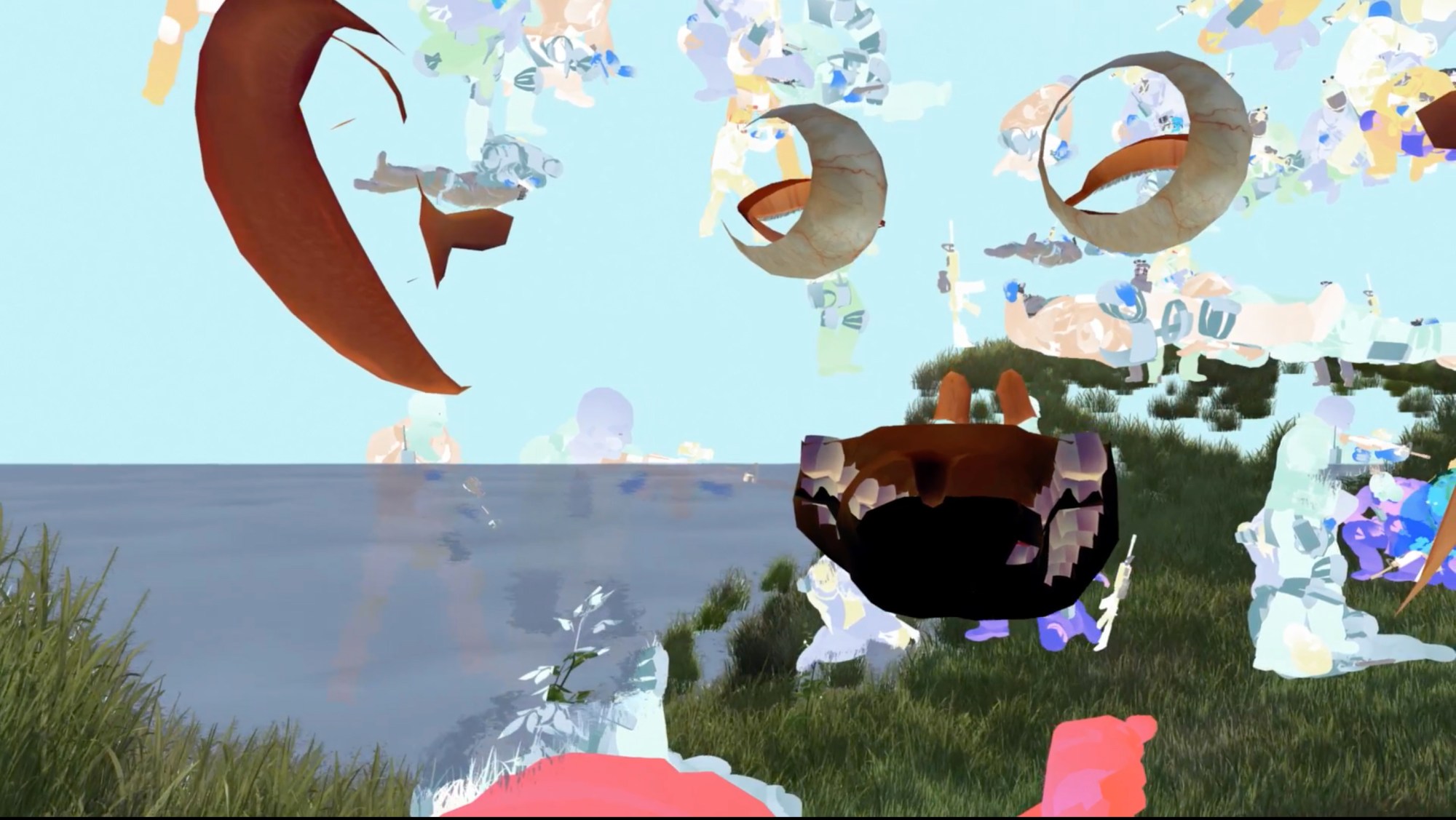
Rachel Rossin, VR section
The Observer once described Rachel Rossin as “a Florida-born gaming junkie and self-trained programmer who also happens to be a compelling painter of large-scale oil paintings.” Rossinhas created fascinating virtual reality works like “The Sky is a Gap” (which used room-scale tracking, so the viewer’s position in physical space shifted the piece) and “I Came and Went as a Ghost Hand” (where gaze-tracking software meant that one’s eyes could essentially pull at the environment within the artwork). For Frieze, Rossin will be showing “Man Mask,” a digital virtual reality animation oriented by an immersive first-person shooter character. The work, filled with dappled light and bright blades of grass, is a commission by Rhizome and the New Museum, where Rossin did a fellowship in Virtual Reality Research and Development in 2015-2016. Rossin’s studio described the piece as “a body awareness meditation led by Rossin through an exploded tableau of Call of Duty animation sequences set on repeat,” against the beat of a—wait for it—Chris Brown song. Ever the pioneer, Rossin is currently creating a new body of work containing hologram/painting combines.
